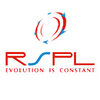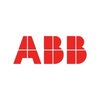Filter interviews by
Expert Interview Questions and Answers
Be the first one to contribute and help others!
Interview questions from similar companies

I applied via Walk-in and was interviewed before Jun 2019. There were 4 interview rounds.
Interview Questionnaire
8 Questions
- Q1. How many years of experience
- Q2. What are you studying
- Q3. What is Fmcg Fast moving Consumer goods
- Ans.
FMCG stands for Fast Moving Consumer Goods. These are products that are sold quickly at relatively low cost and are consumed on a daily basis.
FMCG refers to a wide range of frequently purchased consumer products such as food, beverages, toiletries, and household goods.
These products have a short shelf life and are typically sold in large quantities.
FMCG companies focus on mass production, distribution, and marketing to...
- Q4. What is Fmcg What is food items
- Ans.
FMCG stands for Fast Moving Consumer Goods. It refers to products that are sold quickly and at a relatively low cost.
FMCG includes items like packaged food, beverages, toiletries, cleaning products, and over-the-counter drugs.
These products have a short shelf life and are consumed frequently by consumers.
FMCG companies often rely on extensive distribution networks and aggressive marketing strategies to reach a wide cus...
- Q5. How do you pich in market
- Ans.
To pitch in the market, you need to clearly communicate your product or service's unique value proposition and target the right audience.
Identify your target market and understand their needs and pain points
Craft a compelling and concise elevator pitch that highlights the benefits and differentiation of your product or service
Leverage various marketing channels such as social media, email marketing, and content marketi...
- Q6. How to Convience customer
- Ans.
To convince customers, understand their needs, build trust, provide value, and offer solutions.
Listen actively to understand customer needs and pain points.
Build trust by demonstrating expertise, credibility, and reliability.
Highlight the value and benefits of your product or service.
Offer tailored solutions that address specific customer challenges.
Provide social proof through testimonials, case studies, or success st...
- Q7. Will give offer letter
- Q8. No More questions no more interview

I applied via Referral and was interviewed before Nov 2018. There were 2 interview rounds.
Interview Questionnaire
2 Questions
- Q1. Plant room equipment deatails
- Q2. Valve installation deatails
Interview Preparation Tips

I applied via Approached by Company and was interviewed before Jan 2019. There were 2 interview rounds.
Interview Questionnaire
1 Question
- Q1. Tell me about your self
Interview Preparation Tips

Senior Accounts Executive Interview Questions & Answers
RSPL Groupposted on 11 Nov 2019
I applied via Naukri.com and was interviewed before Nov 2018. There was 1 interview round.
Interview Questionnaire
1 Question
- Q1. Account, gst related
Interview Preparation Tips

Interview Questionnaire
3 Questions
- Q1. All questions asked from resume. Accruals, prepaids, FX revaluation ( why, what, how we do?), AP/AR/GL Reconciliations, Bank upload and open iten management, month end reporting, Fixed assets questions ( A...
- Q2. Reason for job change. Expectations regarding hike. Are you a team player? Why should we hire you? What is achivement in your current job? Knowledge about SAP.
- Q3. Please do some research about the organisation without miss. History, key people, Nature of the business, values, strategy, Revenue, net profit, total assets in the latest financial statements available in...

Interview Questionnaire
3 Questions
- Q1. What is baud rate? How does it affect communication ?
- Ans.
Baud rate is the rate at which data is transmitted over a communication channel.
Baud rate is measured in bits per second (bps).
Higher baud rates allow for faster data transmission.
Baud rate must be set the same on both ends of the communication channel.
Incorrect baud rate settings can result in data corruption or loss.
Examples of communication channels that use baud rate include UART, SPI, and I2C.
- Q2. What design Issues you faced in your Masters project ?
- Q3. How I2C communication protocol works what things needs to be taken care while designing for I2C peripheral ,pull-up resistors etc
- Ans.
I2C is a serial communication protocol used to connect multiple devices with two wires. Pull-up resistors are necessary for proper communication.
I2C uses a master-slave architecture where the master initiates communication.
Each device on the bus has a unique address assigned to it.
Data is transmitted in packets with a start and stop bit.
Pull-up resistors are necessary to ensure proper voltage levels on the bus.
The valu...
Interview Preparation Tips
Skills evaluated in this interview

Interview Questionnaire
6 Questions
- Q1. What is trigger new & old ?
- Ans.
New and old are trigger context variables in Salesforce that store the new and old versions of a record being processed.
New stores the updated version of the record being processed in a trigger.
Old stores the previous version of the record being processed in a trigger.
New and old are used to compare changes made to a record in a trigger.
New and old are only available in before and after triggers, not in validation or w
- Q2. Can we using old method for data update ?
- Ans.
No, using old methods for data update is not recommended.
Old methods may not be compatible with new systems
Old methods may not have the necessary security measures
Using old methods can lead to data corruption or loss
- Q3. What is diff between SOQL & SOSL ?
- Ans.
SOQL is used to query records from a single object, while SOSL is used to search for records across multiple objects.
SOQL is used to retrieve data from a single object based on conditions
SOSL is used to search for data across multiple objects based on search terms
SOQL supports aggregate functions, while SOSL does not
SOQL is case-sensitive, while SOSL is not
SOQL queries are limited to 100 records, while SOSL can return
- Q4. What is governor limit ? why is it there ?
- Ans.
Governor limits are limits enforced by Salesforce to ensure efficient use of shared resources.
Governor limits are enforced on Apex code, SOQL queries, DML statements, and other operations.
They prevent runaway code from monopolizing shared resources and causing performance issues.
Examples of governor limits include limits on CPU time, heap size, and database queries.
Developers must design their code to work within these...
- Q5. What can do for run apex class ? what is get precaution ?
- Ans.
To run an Apex class, we need to create an instance of the class and call its methods. Precautions include testing and avoiding governor limits.
Create an instance of the class using the 'new' keyword
Call the methods using dot notation
Test the class thoroughly before deploying to production
Avoid hitting governor limits by optimizing code and limiting queries
- Q6. What is lightning data services ?
- Ans.
Lightning Data Service is a framework that allows developers to easily access and manipulate data in Salesforce.
It provides a standard interface for data manipulation
It automatically handles data caching and synchronization
It supports CRUD operations on records and fields
It can be used with Lightning Components and Apex controllers
Skills evaluated in this interview

I applied via Naukri.com
Interview Questionnaire
6 Questions
- Q1. Will is Interview of Ujjivan small financial bank , on telephonic ? Will be better for me if become so that at least first round due to lockdown .
- Q2. Is it possible to face interview from bank assurance channel?
- Q3. How many branches have to handle and lookout as a cluster manager ?
- Ans.
The number of branches to handle as a cluster manager varies depending on the company and industry.
The number of branches can range from 5 to 50 or more.
The size of the branches and the complexity of the sales process can also affect the number of branches a cluster manager handles.
The cluster manager is responsible for overseeing the sales performance of all branches in their cluster.
They must ensure that each branch ...
- Q4. How much salary may I deserve ? I was worked as a team leader in HDFC bank that's why I've experience as a banker .
- Q5. Has there any incentive or increase of salary for over achievement targets ?
- Q6. I have no more question to ask .
Interview Preparation Tips

Interview Questionnaire
12 Questions
- Q1. LTE Architecture
- Q2. Interface between LTE
- Ans.
Interface between LTE refers to the connection between the LTE network and other networks or devices.
LTE interfaces with other cellular networks such as 3G and 2G through inter-RAT handover
LTE also interfaces with non-cellular networks such as Wi-Fi and Ethernet through evolved packet core (EPC)
LTE devices interface with the LTE network through the air interface using radio frequency signals
LTE also interfaces with cor...
- Q3. What is X2 interface
- Ans.
X2 interface is a communication interface between two eNodeBs in LTE network.
X2 interface is used for inter-cell handover and load balancing.
It is a point-to-point interface that connects two eNodeBs.
X2 interface is used for exchanging control and user plane data between eNodeBs.
It is a critical interface for LTE network performance and reliability.
X2 interface supports various protocols such as S1AP, GTP, and RANAP.
- Q4. Channels of LTE
- Ans.
LTE has 20 MHz bandwidth divided into 100 resource blocks. Each resource block has 12 subcarriers and 7 symbols.
LTE has 20 MHz bandwidth
Divided into 100 resource blocks
Each resource block has 12 subcarriers and 7 symbols
- Q5. KPI of LTE
- Ans.
KPIs (Key Performance Indicators) of LTE include throughput, latency, coverage, and call setup success rate.
Throughput measures the amount of data that can be transmitted over the network in a given time period.
Latency measures the time it takes for data to travel from the source to the destination.
Coverage measures the area where the network signal is available.
Call setup success rate measures the percentage of succes...
- Q6. What is CSFB?
- Ans.
CSFB stands for Circuit Switched Fallback, a technology that allows LTE devices to fallback to 2G or 3G networks for voice calls.
CSFB is used when a LTE device is unable to make a voice call over the LTE network.
It allows the device to switch to a 2G or 3G network for voice calls.
CSFB is a temporary solution until VoLTE (Voice over LTE) becomes more widely available.
CSFB can cause call setup delays and impact the user
- Q7. Why OFDMA technique used in LTE?
- Ans.
OFDMA is used in LTE to improve spectral efficiency and support multiple users simultaneously.
OFDMA allows for multiple users to share the same frequency band by dividing it into smaller subcarriers.
It also enables dynamic allocation of subcarriers to users based on their bandwidth requirements.
This results in better spectral efficiency and higher data rates.
OFDMA is also resistant to interference and fading, making it...
- Q8. Differentiate FDD & TDD
- Ans.
FDD and TDD are two different duplexing techniques used in wireless communication.
FDD stands for Frequency Division Duplexing and TDD stands for Time Division Duplexing.
In FDD, separate frequency bands are used for uplink and downlink communication, while in TDD, the same frequency band is used for both uplink and downlink communication.
FDD is used in technologies like 2G, 3G, and 4G LTE, while TDD is used in technolog...
- Q9. What is massive MIMO?
- Ans.
Massive MIMO stands for Massive Multiple Input Multiple Output. It is a wireless communication technology that uses a large number of antennas at the base station to improve network performance.
Massive MIMO uses a large number of antennas at the base station to improve network performance.
It can significantly increase the capacity and coverage of wireless networks.
It works by using spatial multiplexing to transmit mult...
- Q10. LTE Channels
- Q11. LTE Call Flow
- Q12. Type of Handover & its process
- Ans.
Handover is the process of transferring an ongoing call or data session from one cell to another.
There are two types of handover: Hard Handover and Soft Handover.
Hard Handover involves breaking the connection with the current cell before establishing a connection with the new cell.
Soft Handover involves establishing a connection with the new cell before breaking the connection with the current cell.
The handover process...
Skills evaluated in this interview

Interview Questionnaire
4 Questions
- Q1. Tell me something about yourself ?
- Q2. What's your family background ?
- Q3. Technical questions about my subject !!
- Q4. Subjective knowledge of B.tech subject.
Expert Interview FAQs
Tell us how to improve this page.
Interview Questions for Popular Designations
Interview Questions from Similar Companies

Asian Paints

Samsung

Axis Max Life Insurance

Udaan
- Home >
- Interviews >
- Expert Interview Questions







